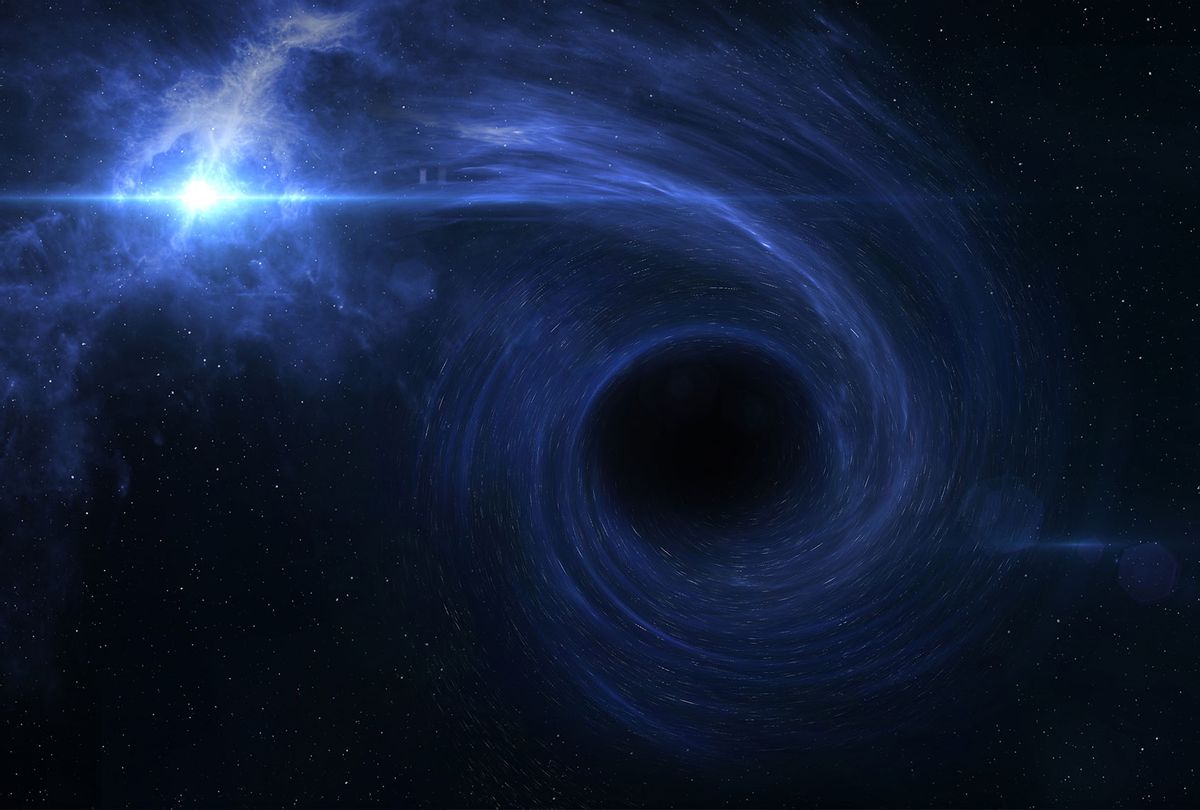Two hundred thirty-six million light-years away, and hence 236 million years ago, a strange and intense light erupted from a distant astronomical object. The intergalactic rumble was detected here on Earth, where astronomers rapidly ascertained that the flare originated around a supermassive black hole. A spontaneous reversal of the black hole's magnetic poles could be the culprit, according to the latest hypothesis, but the debate is far from settled.
Referred to simply as 1ES 1927+654, the galaxy causing a big stir spins around a supermassive black hole millions or billions of times more massive than our sun. This is true of most larger galaxies including our own, the Milky Way, which has its own supermassive black hole at its center and around which the solar systems of the galaxy revolve. Black holes have mind-bogglingly large masses, which causes space and time to distort around them. Light itself can not escape the intense gravitational pull beyond a point of no return called the event horizon, making direct observation essentially impossible. What astronomers can "observe" are emissions from various forms of radiation, including the visible light from black holes' surrounding accretion disks, as well as gravitational waves that they might emit.
RELATED: Gravitational wave telescopes have revealed a long-predicted, new class of black hole
A ball of superheated gas particles, known as a corona, was identified as the source of the violent eruption of ultraviolet and visible light. Located in the black hole's accretion disk — the assortment of normal matter that spins rapidly around black holes on the safe side of the event horizon — the corona would emit higher energy X-ray particles under normal circumstances. As the rare event unfolded from 2017 to 2021, X-rays from the black hole disappeared entirely while UV and visible light emissions reached levels astronomically higher than they normally would.
An inversion of magnetic fields, in which the north pole becomes the south pole and vice versa, is presumed to be relatively common in the universe. Earth's own magnetic fields flip every million years or so, though these events are thoroughly unpredictable.
"Rapid changes in visible and ultraviolet light have been seen in a few dozen galaxies similar to this one," Dr. Sibasish Laha stated in a NASA press release. "But this event marks the first time we've seen X-rays dropping out completely while the other wavelengths brighten."
Understanding why has been a matter of contention ever since. A research scientist at NASA's Goddard Space Flight Center, Laha and an international team of experts offer one possible explanation. They linked the unusual changes in the accretion disk to a magnetic reversal in a paper recently accepted into The Astrophysical Journal. Another author on the study, Dr. Mitchell Begeleman, explained the rationale behind their conclusion.
"A magnetic reversal, where the north pole becomes south and vice versa, seems to best fit the observations," Begelman stated in the press release. "The field initially weakens at the outskirts of the accretion disk, leading to greater heating and brightening in visible and UV light."
Such inversion of magnetic fields, in which the north pole becomes the south pole and vice versa, is presumed to be relatively common in the universe. Earth's own magnetic fields flip every million years or so, though these events are thoroughly unpredictable.
Within the ever-expanding cosmos, few celestial bodies elude our grasp as thoroughly as black holes. We know black holes have angular momentum, mass, and charge, but it is unknown if any other properties are discernible. Physicist Stephen Hawking held a decades-long bet with a duo of physicists over whether or not black holes could leak any other information regarding their internal workings. In other words, the specifics of how a black hole's internal magnetic field might flip are hard to figure out due to the dearth of physical evidence available to predict how such an event would unfold inside a black hole. Their properties often confound scientists, lending intrigue to representations in popular culture and media.
An alert from the All-Sky Automated Survey for Supernovae in March 2018 is what prompted the discovery of this latest black hole oddity. Visible light 100 times brighter than normal from the distant galaxy warranted a closer look. Earlier data from the NASA-funded Asteroid Terrestrial-impact Last Alert System showed the radical shift began in late 2017. Promptly trained on the galaxy, satellites soon revealed the origin of the flare at the center of the galaxy.
The cause of the disruption sparked a myriad of conclusions. One working hypothesis suggested that a star may have drifted just a little bit too close to the black hole.
Want more health and science stories in your inbox? Subscribe to Salon's weekly newsletter The Vulgar Scientist.
"An earlier interpretation of the eruption suggested that it was triggered by a star that passed so close to the black hole it was torn apart, disrupting the flow of gas," co-author Dr. Josefa Becerra González stated, adding that the length of the event does not align with that previous conclusion.
As farfetched as it may sound, scientists are not just wildly spitballing. (Indeed, it would not be the first time a star crossed a black hole's point of no return.) Yet while the referenced paper from 2019 predates a return to homeostasis in the distant galaxy, new findings had the benefit of a wider breadth of available data. NASA's Neil Gehrels Swift Observatory and ESA's (European Space Agency) XMM-Newton satellite provided ample data to supported new analysis of UV and X-ray frequencies from the source of the disturbance, which supported the magnetic field flip theory.
Read more on black holes:



Shares